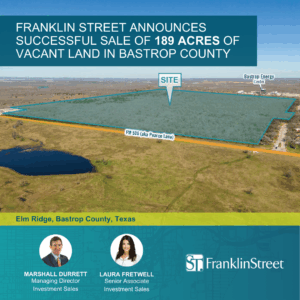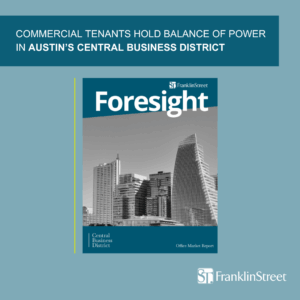It is undeniable that fast-casual restaurant chains in North Florida and South Georgia are resuming their expansion plans. The local unemployment rate ended 2013 under 6%, home building permits jumped nearly 30%, and car sales climbed — all signs of an improving local economy.
As the outlook brightens, another business trend is taking place: Restaurants are right-sizing. Store owners and operators are becoming more efficient, creating opportunities for landlords who are able to reconfigure their spaces to meet this new market dynamic.
The Silver Lining
Consumer demand dropped dramatically and lenders were reluctant to finance businesses. Many tenants and landlords put plans on hold during the recession, which curtailed franchise, corporate restaurant and retail expansions.
NPD Group, a global market research company, reported that while consumers remain cautious about spending, fast-casual and quick-service restaurants anticipate achieving the same, if not more, success in this year than in 2013. The research firm predicts that fast-casual chains will grow an average of 10% annually through 2017.
That’s good news for landlords that have lost tenants or struggled to fill vacant spaces. In Jacksonville, Panera Bread began signing leases after a year hiatus, Tijuana Flats set the stage to grow in Savannah, Ga., and Seasons of Japan expects to expand after opening in St. Johns Town Center in suburban Jacksonville.
Finding the Right Footprint
As the number of fast-casual restaurants grows, the spaces they lease are shrinking. Bono’s Pit Bar-B-Q is one of a number of fast-casual chains that is reducing its footprint. The company, which is based in Jacksonville, Fla., is shrinking its typical store from 5,000 sq. ft. to half that size.
Similarly, Panera Bread is moving from 6,000 sq. ft. to between 3,500 sq. ft. and 4,000 sq. ft. Red Robin Gourmet Burgers, whose full-service restaurant occupies 5,800 square feet, is rolling out a 4,000-sq.-ft., fast-casual version and a branded Red Robin’s Burger Works that occupies only 2,200 sq. ft.
Why? First, to control real estate and labor costs. Second, to stay competitive. The average check at a fast-casual restaurant averages more than $9, but operators can’t push that figure much higher without experiencing backlash from consumers who are now more inclined to bring their lunches to work. If prices can’t go up, costs must come down.
At the same time, the newest entrants in the fast-casual category are starting small and lean. Lime Fresh Mexican Grill, which doubled its number of locations in 2011, occupies 1,800 sq. ft. to 2,800 sq. ft. Umami Burger, which was second in growth according to Technomic, can occupy as little as 1,000 sq. ft.
Uncle Maddios, a pizza restaurant where consumers create their own pizza, opened its first location in Tallahassee last year and is looking for opportunities between 2,200 sq. ft. and 2,600 sq. ft. Burger Fi will open its first location in Jacksonville at the St. Johns Town Center this year, with plans to expand further, which is in the 2,500 sq. ft. and 3,000 sq. ft. range.
Smaller spaces require fewer employees to operate, which helps chains compete against established names such as Pei Wei, the fast-casual version of P.F. Chang’s. For example, Famous Dave’s BBQ Shack opened its doors in 2012 with a 3,000-sq.-ft. layout that’s half the size of its full-service affiliate.
Finding Space Solutions
Smaller footprints are ideal for inline spaces but can be a headache for shopping center owners trying to reconfigure a vacant, standalone restaurant of 5,000 sq. ft. or more. When our brokers meet with landlords, the conversation begins, “How can we cut up the space so that we can entice two or three tenants?”
The answers bubble up as we explain that fewer chains are taking 5,000 sq. ft. to 6,000 sq. ft., so finding another restaurant for the entire space is less likely than it was five years ago. Then we move to a discussion about marketing to tenants that complement, not compete with, each other.
In recent months, our brokers have helped convert a former Bennigan’s into two restaurants. They are doing the same thing with a closed Perkins Restaurant & Bakery. One option is putting service-oriented retailers, such as a dentist or optometrist, next to a restaurant to alleviate parking space shortages.
Solutions like these enable clients to adjust to new market dynamics. As we focus on inventive ways to use and re-use space, they will be able to attract the newest and best fast-casual tenants, driving traffic to their centers and offering consumers new, attractive dining experiences.
Carrie Smith is Regional Managing Partner in Franklin Street’s Jacksonville office, specializing in retail tenant and landlord representation throughout North Florida. She can be reached at 904-271-4120 or via email at [email protected].



